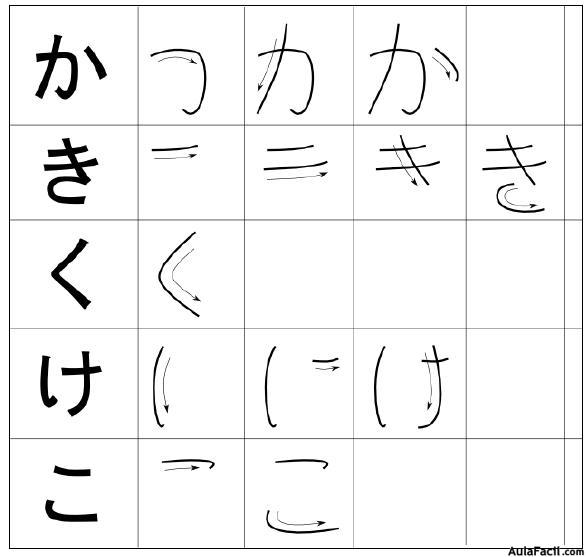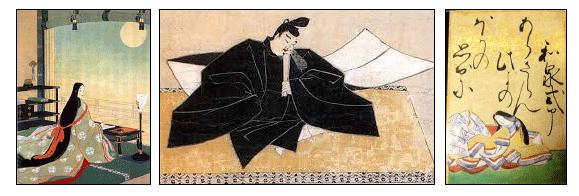Introductions
Content: Introductions, Ka line of Hiragana (Ka, Ki, Ku, Ke, Ko), changing Ka sounds to G sounds ( Ga, Gi, Gu, Ge, Go)
Aim: How do I introduce myself to other people?
New Vocabulary:
Japanese | Romaji | English |
(はじめまして) | hajimemashite | How do you do? |
(わたしの) | watashi no | my |
Supeいn (すぺいん) | Supein | Spain |
(なまえ) | namae | name |
かra (から) | kara | from |
きmashita (きました) | kimashita | came, is from |
Yoroshiくoneがいshimasu (よろしくおねがいします) | yoroshiku onegai shimasu | nice to meet you |
doこ (どこ) | doko | where |
I. Lesson Points:
1. The particle “no” indicates possession of the subject that precedes it. As you have already learned, watashi by itself means “I or me” generally for a woman; however, when followed by the particle “no” it turns into my or mine.
2. The word “Spain” in Japanese is normally written in Katakana because it is a non-Japanese name. However, for now we are using only Hiragana in our lessons until you’ve had time to practice writing all 50 sounds in Hiragana.
3. “Yoroshiku onegai shimasu” is an expression used in various ways from introducing yourself to asking someone for a favor. It literally means “I ask that you would take care of it rightly”. Once you know this phrase, you will hear it spoken all the time from business conversations to ordering food at Japanese restaurants.
4. Using “か – ka” at the end of a statement turns it into a question.
Sample Sentences:
hajime mashite (How do you do?)
Watashiの namae wa あna desu. (My name is Ana)
(Note: “Ana” should be written in Katakana but we are using Hiragana for practice.)
あna san wa doこかra きmashita か? (Where did you come from, Ana?)
Watashi wa speいn かra きmashita (I’m from Spain)
Yoroshiく oneがい shimasu. (Nice to meet you)
| S-3-1 |
Mini-Quiz: (Test your knowledge):
Part A:
They are students (use male form for they). _________________________________
Ana is from Spain. ______________________________________________________
Write A, E, I, O, U in Hiragana: ____________________________________________
Nice to meet you ______________________________________________________
How do you do? _______________________________________________________
Part B:
Write the English meaning in the space provided:
Watashi no: ________________________________________________________
Namae: ___________________________________________________________
Kara: _____________________________________________________________
Kimashita: _________________________________________________________
doko: _____________________________________________________________
Quiz Answers:
Part A: Karera wa gakusei desu, Ana wa supein kara kimashita, あいうえお, yoroshiku onegai shimasu, hajimemashite
Part B: わたしの、なまえ、から、きました、どこ
Writing Practice: Hiragana (Ka, Ki, Ku, Ke, Ko)

Coverting K sounds to G sounds (Ga, Gi, Gu, Ge, Go):
To make G sounds like Ga in the word “Gakusei” is very easy in Hiragana and Katakana. Simply add a mark that is refered to as tenten (it looks like a quotation mark) in Japanese after each Ka hiragana and they will become G sounds. Please see the example below. The same technique is used to make other sounds that we will introduce later

Practice writing the following words in Hiragana
1. Face - Kao - _________________________
2. Chrysanthemum – Kiku - ________________________
3. Keiko – Keiko (girl’s name) - ________________________
4. Here – Koko - __________________________
5. Red – Akai - ___________________________
